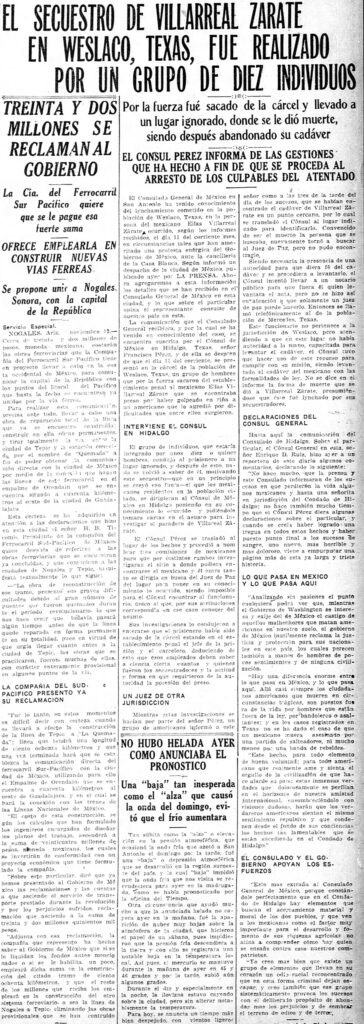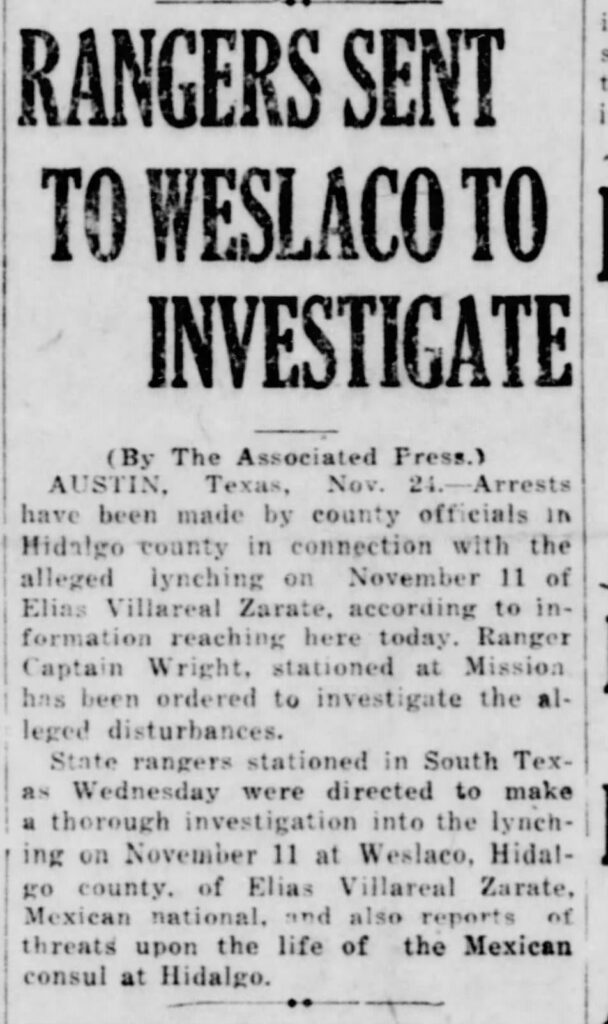#OTD on November 24, 1922 Texas Ranger William Lee Wright was dispatched to Weslaco to investigate the brutal beating and lynching death of Elias Villareal Zárate. Villareal (called Zárate by the press) died at the hands of a mob that had broken him out of jail.

Villareal did construction work in Weslaco. On the night of Nov 11, he had fought with coworker J. F. Sullivan. Police arrested Villareal, but that night a mob of 10 White men broke him out of jail. They drove him 5 miles outside of town, beat him, and shot him in the chest.

Police found his body later that night. To justify the lynching, White folks circulated rumors that Villareal had killed a White man 10 days earlier. That charge was fiction, but it shows one of the ways a victim could be made into a bad person to justify their killing.
Mexicans and Mexican Americans were incensed. In Guadalajara and Weslaco, they protested the murder of Villareal. The Mexican government also demanded an investigation. Ranger Wright arrived in late November 1922 to conduct that investigation.

Wright discovered little, and authorities arrested no one for the killing. That outcome did not sit well with the Mexican-origin community, which continued to be outraged by the numerous 1922 extralegal killings in S. Texas as well as the formation of groups like the White Owls. https://refusingtoforget.org/hamer-at-white-owl/
The early 1920s were very violent years in Texas. This shows that the violence of the previous decade largely continued into the next. In many ways the early 20th century represented a nadir in Mexican/Mexican American life in Texas.
Yet this history is largely ignored by the @txrangermuseum, which makes no note of Wright’s passivity in the face of this lynching in his Hall of Fame entry. How can we learn from the past if we refuse to face it honestly? https://www.texasranger.org/texas-ranger-museum/hall-of-fame/william-lee-wright/
A key source for this post is @historybrian’s https://uncpress.org/book/9781469670126/borders-of-violence-and-justice/

